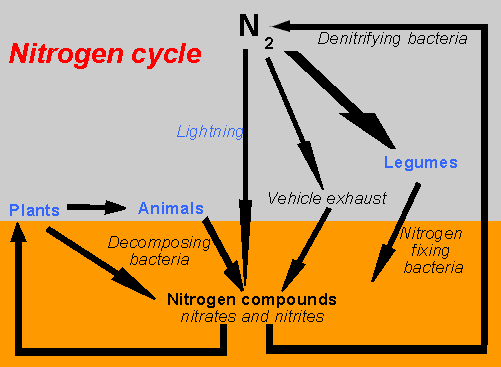
Click on the blue writing for more information
Nitrogen forms of the gases of the atmosphere.
Nitrogen from the atmosphere is converted to ammonium (NH4+) compounds by
Nitrogen (N2 ) is converted to nitrous oxide (NO) by
Denitrifying bacteria
Click for a more detailed diagram.
The above diagram outlines
the pathways atmospheric nitrogen is cycled through the biosphere. Nitrogen
exists in animals mainly in the form of proteins. Amino acids are not
stored and are broken down to form urea when not used to make protein.
Occasionally, during starvation, protein is used as an energy source but
only after the amine group from the amino acids are removed. The amino
group is combined with carbon dioxide to form urea((NH2)2CO).
Legumes provide a source of soluble nitrogen compounds able to be used
by plants. Often legumes are planted in fields during winter to increase
the nitrogen content of the soil without having to use artificial fertilizers.